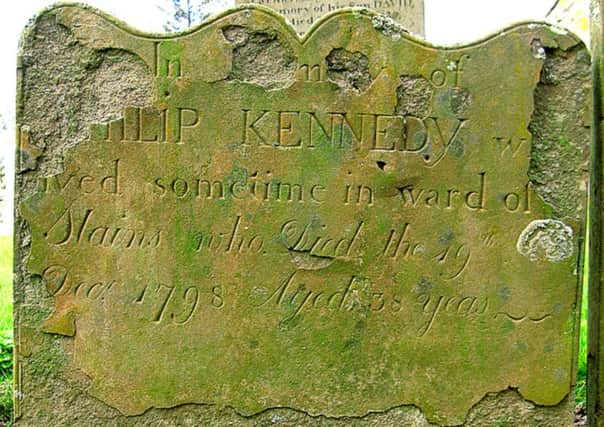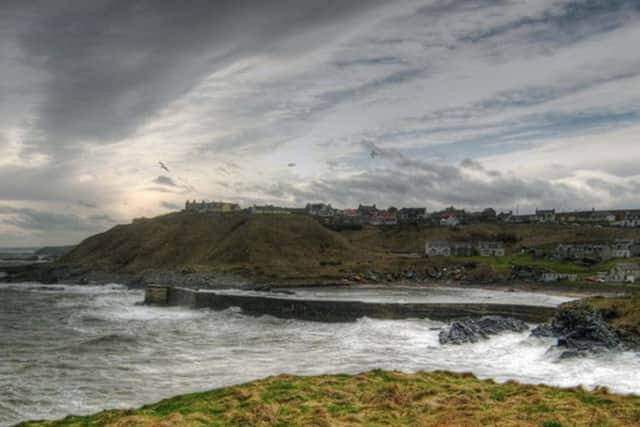The brutal death of Scotland's notorious gin smuggler


In 1707, the excise duty on spirits was dramatically hiked in a bid to put drink out of reach of the lower classes with the tax opening up a thriving illicit trade with Holland.
So hard fought were attempts to secure the booty that excise men - known as gaugers - were in repeated running battles with the smugglers over the cargo.


Advertisement
Hide AdAdvertisement
Hide AdViolence was regularly used to secure the liquor and, according to a 19th Century account by William Alexander, the exciseman was deemed “a fit subject for rough handling as occasion offered.”
“To tie his legs together and fasten his hands forcible behind his back and leave him lying helpless on the lone hillside was not deemed out of place by any means,” Alexander wrote.
One moonlit encounter between the exciseman and smugglers on the Aberdeenshire coastline led to the brutal death of Philip Kennedy, one of Scotland’s most notorious gin smugglers
In December 1798, the lugger Crooked Mary landed 16 ankers of gin at Cransdale with Kennedy, who also farmed in the area, among those charged with moving the alcohol ashore.
Advertisement
Hide AdAdvertisement
Hide AdPart of the cargo was due to be shifted across land by night by cart, with the gaugers tipped off about the planned movement.
Three excise men lay in wait - fully armed with swords - near the Kirk of Slains for the passing consignment.
As a precaution, the smugglers sent several men, including Kennedy, to check the route was clear.
Alexander wrote: “One of those who first encountered the excise men was Kennedy, and being a man of feared courage as well as powerful physique, he seized and then threw down two of them, calling to his companions to secure the third.”
Advertisement
Hide AdAdvertisement
Hide AdHowever, his associates fled and hid in the bushes as the violent encounter unfolded with Kennedy’s brother believed to have been among them.
Kennedy was soon struck over the head by a sword held by the third exciseman.
Alexander wrote: “The savage gauger who was still free was then observed by some of the cowards lying perdu in the adjacent bushes to hold his sword above his head as if to make certain that he was using the edge.
“With a sweeping and relentless stroke, the smuggler’s skull was laid open with a frightful bash.”
Advertisement
Hide AdAdvertisement
Hide AdWith blood streaming, Kennedy staggered around a quarter of a mile to Kirkton of Slains, where he collapsed and died.
It is said the death of Kennedy inspired parts of Sir Walter Scott’s novel Guy Mannering.
A simple gravestone in the Slains Kirkyard is now the only visible reminder of the smuggling run that went disastrously wrong.
According to Duncan Harley in the A-Z of Curious Aberdeenshire, the skull of Philip Kennedy has been occasionally dug up during later internments at the graveyard.
Advertisement
Hide AdAdvertisement
Hide Ad“Gravediggers can easily identify it by the deep cut of the exciseman’s cutlass,” Harley wrote.
The stretch of coastline between Aberdeen and Peterhead was a smugglers’ paradise during the 18th Century given the never ending network of caves that can be found here.
According to accounts from the early part of the century, more than 1,000 ankers of foreign spirits were landed here every month.
Contraband as also hidden on the beaches with pits dug deep into the sand.
Advertisement
Hide AdAdvertisement
Hide AdDry sand and wet sand were used to cover the booty to conceal any changes to the ground caused by digging.
According to accounts, the pit was lined with bricks or timber, and the roof was always at least six feet underground in a bid to defy the probes used to locate hidden caches on the beach, which were six feet long.
